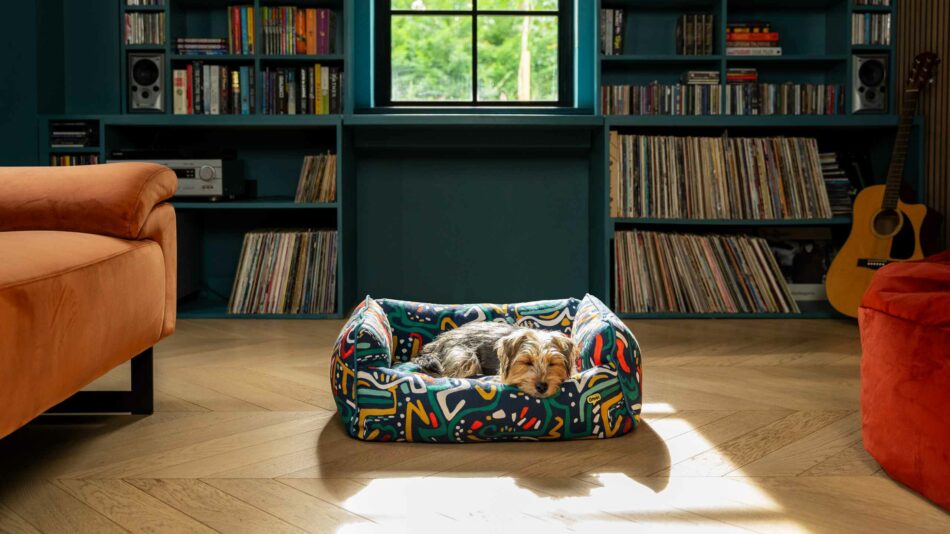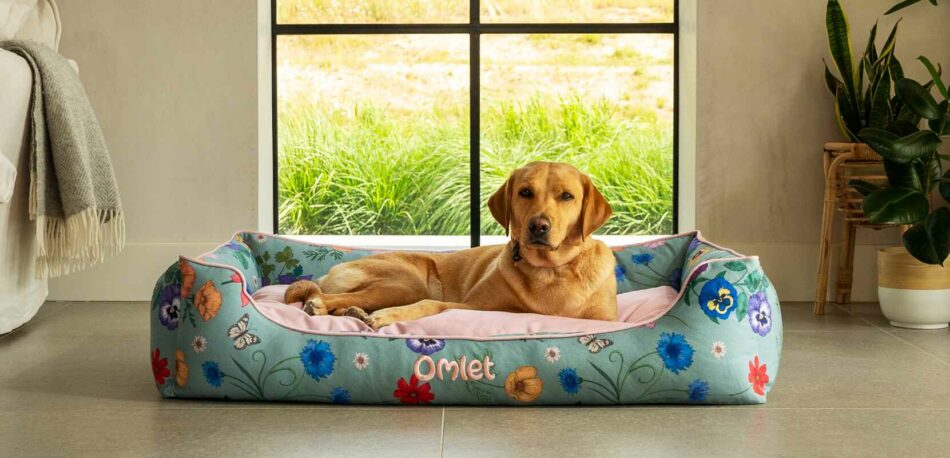7 things you didn’t know about dogs and sleep
Ah, the simple joy of watching our furry companions curl up into a cozy ball and drift off into dreamland. For dog lovers, witnessing our canine friends catch some z’s is a delightful spectacle that never fails to warm our hearts. But did you know that behind those adorable snoozing poses lie a plethora of fascinating facts about dogs and their sleeping habits? Prepare to be intrigued as we delve into 7 things you didn’t know about dogs and sleep.
Dogs circle before bed:
Ever wonder why your dog makes a few rounds before finally settling down for the night? This seemingly quirky behavior actually has deep-rooted evolutionary significance. In the wild, dogs would circle to create a comfortable sleeping spot and to ensure safety from predators. It’s a natural instinct, ingrained in their DNA, to create a spot that is comfy for sleep but away from danger.
Even though our domestic pups may not face the same threats, their innate behavior remains a part of their makeup. You can cater to this ancestral need by making sure your dog has a comfortable and supportive dog bed that fits their size. Allowing your dog the opportunity to have a warm and cozy spot to sleep will ensure their primal and domestic needs are met.
Dogs do dream:
Have you ever noticed your dog twitching, whimpering, or even barking in their sleep, and wondered if they’re chasing all those squirrels they never quite catch in real life? Well the answer isn’t entirely clear cut.
Dogs do indeed dream; research suggests that dogs experience similar sleep patterns to humans, including the rapid eye movement (REM) stage where dreaming occurs. But while it’s confirmed that dogs do dream, the content of their dreams still remains a bit of a mystery.
Are they dreaming about playing with their toys, other dogs, or better yet, you? We may never know for sure. Our furry friends can’t spill the beans on their dreamland wonder but we like to think that their humans are never far from their subconscious adventures.
The meaning behind dog yawns:
You know how sometimes you just can’t help but let out a big yawn when you’re feeling sleepy or bored? Yawns are universally recognized as a sign of tiredness or boredom, but when it comes to dogs, there’s more to it than meets the eye. In humans, some yawning is a way of empathizing; we often yawn when others do, in a subconscious show of solidarity.
When dogs yawn, it can actually be a way for them to communicate with us and other dogs around them. It’s like their way of saying, “Hey, I’m feeling a bit stressed or anxious right now.” Just like humans, dogs can feel a range of emotions, and yawning is one of the ways they might express those feelings.
But dogs also yawn as a way to calm themselves down in tense situations. So if you notice your furry friend giving a big yawn during a training session or when meeting new people, it might not be because they’re bored or tired, but rather because they’re trying to soothe themselves. It’s their version of taking a deep breath to relax. So give your dog some space if you notice a big yawn and try to read their body language to see if they might need a little extra comfort or support.
Zoomies before z’s:
We’ve all witnessed the phenomenon of “zoomies”—those bursts of frenetic energy that seem to possess our dogs out of nowhere. Surprisingly, these spirited romps often occur just before bedtime. While it may seem counterintuitive, this behavior is believed to be a natural way for dogs to release excess energy before settling down for the night.
In the wild, dogs would spend their days hunting, exploring, and playing, so they’d naturally be pretty active. As the sun starts to set and night falls, their instincts kick in, telling them it’s time to find a safe spot to rest and recharge for the next day’s adventures. So, those pre-sleep zoomies are basically their way of mimicking that wild behavior, getting rid of any excess energy so they can sleep soundly through the night. It’s like their own little bedtime routine, complete with a sprint to the finish line before settling in for some well-deserved rest.
Paws up, eyes closed:
Ever notice how your furry friend sometimes snoozes with their paws flung up in the air like they just don’t care? It’s a common sight in the canine world, and there’s more to it than just striking a cute pose. Dogs often sleep with their paws in the air as a sign of relaxation and comfort. Just like we might sprawl out on the couch after a long day, our four-legged pals stretch out in all sorts of positions to unwind. With their paws up, they’re releasing tension in their muscles and letting their bodies sink into a state of blissful repose
But why exactly do they choose this particular position? When your dog plops down on their back with their paws in the air, they’re exposing their most vulnerable parts—like their belly—to the world. It might seem counterintuitive to us humans, but for dogs, it’s a sign of trust and security. By showing off their soft underbelly, they’re letting you know that they feel completely safe and at ease in their surroundings. It’s a testament to the bond between you and your furry companion.
Dogs have a third eyelid:
As dog owners, it’s natural for us humans to want to stare all day at our furry canine companions as they sleep. But sometimes, you may notice that one eye almost looks like it’s still open while the snores are still filling the room. Are they half awake? Nope. That’s just your dog’s third eyelid you’re seeing. Also known as the nictitating membrane, this translucent membrane serves as an extra layer of protection for a dog’s eyes. And it’s most commonly seen when they are in deep slumber.
While it may sound odd, this unique feature helps keep their eyes moist and shielded from debris. And it also acts as a trusty defender keeping your canine companion’s eyes squeaky clean. Think of it as a natural windshield wiper, sweeping away any gunk or goop that might try to cling onto those adorable puppy eyes. So, the next time you catch a glimpse of your dog’s third eyelid, remember, it’s just another fascinating aspect of their anatomy that makes them so wonderfully unique.
Dogs sleep for half their life:
It’s no secret that dogs love their beauty sleep, but just how much do they snooze? As it turns out, dogs spend approximately half of their lives sleeping. While the exact amount varies depending on factors like age and breed, it’s safe to say that our canine companions are true sleep enthusiasts. While your dog’s snooze sessions might seem excessive, they’ve actually got it all figured out.
While we humans often juggle hectic schedules and burn the candle at both ends, our four-legged companions show us the true meaning of balance. From chasing squirrels to playing fetch, dogs throw themselves into every activity with boundless enthusiasm and when it’s time to recharge, they do it. So make sure your furry friend has a comfy dog bed to catch all their z’s and maybe try relaxing with them the next time they have a nap.
Omlet and your dog
Understanding the intricacies of dogs and their sleep habits is just one way we can deepen our connection with our beloved pets. At Omlet, we recognize the importance of catering to every aspect of our dogs’ well-being, from their sleep to their playtime and beyond. That’s why we’re dedicated to crafting innovative products like customizable dog beds and meticulously engineered dog dens that enhance the lives of both dogs and their owners, ensuring they can spend more quality time resting by your side. Because when it comes to our furry friends, every moment shared, waking or sleeping, is truly precious.
This entry was posted in Dogs


